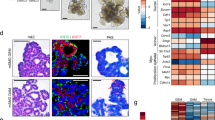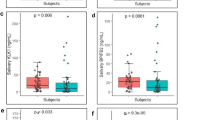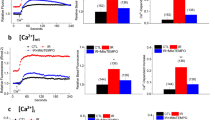Abstract
Oral complications of salivary hypofunction often afflict cancer patients undergoing radiotherapy for head and neck cancers. Dry mouth or xerostomia is an undesirable consequence of radiotherapy that compromises normal oral functions in addition to causing odynophagia and increasing the patient's risk of oral infections and dental caries. Radiation-induced xerostomia is irreversible, and palliative measures to provide symptomatic relief remain the mainstay of treatment. Previously, we identified a splice variant of a cellular kinase, Tousled-like kinase 1B (TLK1B), which when overexpressed protects normal epithelial cells against ionizing radiation (IR)-induced cell death. To address the need to protect salivary glands in patients undergoing regional radiotherapy, we investigated whether preemptive expression of TLK1B in salivary glands protects against IR. In stably-derived salivary cell lines in vitro, TLK1B expression increased cell survival after IR. Cells expressing exogenous TLK1B were less radiosensitive (A5-TLK1B, α/β=0.67 Gy; ParC5-TLK1B, α/β=4.3 Gy) compared to control cells (A5-BK, α/β=1.7 Gy; ParC5-BK, α/β=32.7 Gy). Using a recombinant adenovirus serotype 5 viral vector for TLK1B gene transfer into rat submandibular salivary glands in vivo, we demonstrated that TLK1B protects the saliva-secreting acinar cells and better preserves salivary gland function against IR relative to control glands. After a single fraction of 16 Gy, the decline in salivary function at 8 weeks was less pronounced in TLK1B-treated animals (40%) as compared to saline-treated controls (67%). Histopathological analysis demonstrated increase in acinar atrophy, decrease in acinar cell number, and increase in inflammatory infiltrate and fibrosis in irradiated control tissues relative to TLK1B-treated glands. These results show the radioprotective benefits of TLK1B and implicate its usefulness in the management of regional radiotherapy-induced xerostomia.
This is a preview of subscription content, access via your institution
Access options
Subscribe to this journal
Receive 6 print issues and online access
$259.00 per year
only $43.17 per issue
Buy this article
- Purchase on SpringerLink
- Instant access to full article PDF
Prices may be subject to local taxes which are calculated during checkout




Similar content being viewed by others
References
Fischer DJ, Epstein JB . Management of patients who have undergone head and neck cancer therapy. Dent Clin North Am 2008; 52: 39–60.
McGowan D . Chemotherapy-induced oral dysfunction: a literature review. Br J Nurs 2009; 17: 1422–1426.
Manikantan K, Khode S, Sayed SI, Roe J, Nutting CM, Rhys-Evans P et al. Dysphagia in head and neck cancer. Cancer Treat Rev 2009; 35: 724–732.
Chambers MS, Rosenthal DI, Weber RS . Radiation-induced xerostomia. Head Neck 2007; 29: 58–63.
Sciubba JJ, Goldenberg D . Oral complications of radiotherapy. Lancet Oncol 2006; 7: 175–183.
Baharudin A, Khairuddin A, Nizam A, Samsuddin AR . Evaluation of irradiated salivary gland function in patients with head and neck tumors treated with radiotherapy. J Laryngol Otol 2009; 123: 108–113.
Bruce SD . Radiation-induced xerostomia: how dry is your patient? Clin J Oncol Nurs 2004; 8: 61–67.
Kaplan I, Zuk-Paz L, Wolff A . Association between salivary flow rates, oral symptoms, and oral mucosal status. Oral Surg Oral Med Oral Pathol Oral Radiol Endod 2008; 106: 235–241.
Koukourakis MI, Danielidis V . Preventing radiation induced xerostomia. Cancer Treat Rev 2005; 31: 546–554.
de Castro Jr G, Federico MHH . Evaluation, prevention and management of radiotherapy-induced xerostomia in head and neck cancer patients. Curr Opin Oncol 2006; 18: 266–270.
Baum BJ, Zheng C, Cotrim AP, Goldsmith CM, Atkinson JC, Brahim JS et al. Transfer of the AQP-1 cDNA for the correction of radiation-induced salivary hypofunction. Biochim Biophy Acta 2006; 1758: 1071–1077.
Epperly MW, Carpenter M, Agarwal A, Mitra P, Nie S, Greenberger JS . Intraoral manganese superoxide dismutase-plasmid/liposome (MnSOD-PL) radioprotective gene therapy decrease ionizing irradiation-induced murine mucosal cell cycling and apoptosis. In Vivo 2004; 18: 401–410.
Roe JL, Rivin CJ, Sessions RA, Feldmann KA, Zambryski PC . The Tousled gene in A. thaliana encodes a protein kinase homolog that is required for leaf and flower development. Cell 1993; 75: 939–950.
Roe JL, Nemhauser JL, Zambryski PC . TOUSLED participates in apical tissue formation during gynoecium development in Arabidopsis. Plant Cell 1997; 9: 335–353.
Sillje HH, Nigg EA . Identification of human Asf1 chromatin assembly factors as substrates of Tousled-like kinases. Curr Biol 2001; 11: 1068–1073.
Carrera P, Moshkin YM, Gronke S, Sillje HH, Nigg EA, Jackle H et al. Tousled-like kinase functions with the chromatin assembly pathway regulating nuclear divisions. Genes Dev 2003; 17: 2578–2590.
Sunavala-Dossabhoy G, Li Y, Williams B, De Benedetti A . A dominant negative mutant of TLK1 causes chromosome missegregation and aneuploidy in normal breast epithelial cells. BMC Cell Biol 2003; 4: 16.
Ehsan H, Reichheld JP, Durfee T, Roe JL . TOUSLED kinase activity oscillates during the cell cycle and interacts with chromatin regulators. Plant Physiol 2004; 134: 1488–1499.
Li Y, DeFatta R, Anthony C, Sunavala G, De Benedetti A . A translationally regulated Tousled kinase phosphorylates histone H3 and confers radioresistance when overexpressed. Oncogene 2001; 20: 726–738.
Sunavala-Dossabhoy G, Balakrishnan SK, Sen S, Nuthalapaty S, De Benedetti A . The radioresistance kinase TLK1B protects the cells by promoting repair of double strand breaks. BMC Mol Biol 2005; 6: 19.
Sunavala-Dossabhoy G, De Benedetti A . Tousled homolog, TLK1, binds and phosphorylates Rad9; TLK1 acts as a molecular chaperone in DNA repair. DNA Repair (Amst) 2009; 8: 87–102.
Canfield C, Rains J, De Benedetti A . TLK1B promotes repair of DSBs via its interaction with Rad9 and Asf1. BMC Mol Biol 2009; 10: 110.
Takayama Y, Kokuryo T, Yokoyama Y, Ito S, Nagino M, Hamaguchi M et al. Silencing of Tousled-like kinase 1 sensitizes cholangiocarcinoma cells to cisplatin-induced apoptosis. Cancer Lett 2010; 296: 27–34.
Byrnes KW, DeBenedetti A, Holm NT, Luke J, Nunez J, Chu QD et al. Correlation of TLK1B in elevation and recurrence in doxorubicin-treated breast cancer patients with high eIF4E overexpression. J Am Coll Surg 2007; 204: 925–934.
Li HH, Chiang CS, Huang HY, Liaw GJ . Mars and Tousled-like kinase act in parallel to ensure chromosome fidelity in Drosophila. J Biomed Sci 2009; 16: 51.
Han Z, Riefler GM, Saam JR, Mango SE, Schumacher JM . The C elegans Tousled-like kinase contributes to chromosome segregation as a substrate and regulator of the Aurora B kinase. Curr Biol 2005; 15: 894–904.
Sillje HH, Takahashi K, Tanaka K, Van Houwe G, Nigg EA . Mammalian homologues of the plant Tousled gene code for cell-cycle-regulated kinases with maximal activities linked to ongoing DNA replication. EMBO J 1999; 18: 5691–5702.
Groth A, Lukas J, Nigg EA, Silljé HH, Wernstedt C, Bartek J et al. Human Tousled like kinases are targeted by an ATM- and Chk1-dependent DNA damage checkpoint. EMBO J 2003; 22: 1676–1687.
De Benedetti A . Tousled kinase TLK1B counteracts the effect of Asf1 in inhibition of histone H3-H4 tetramer formation. BMC Res Notes 2009; 2: 128.
De Benedetti A . Tousled kinase TLK1B mediates chromatin assembly in conjunction with Asf1 regardless of its kinase activity. BMC Res Notes 2010; 3: 68.
Kodym R, Mayerhofer T, Ortmann E . Purification and identification of a protein kinase activity modulated by ionizing radiation. Biochem Biophys Res Commun 2004; 313: 97–103.
Baccaglini L, Shamsul Hoque ATM, Wellner RB, Goldsmith CM, Redman RS, Sankar V et al. Cationic liposome-mediated gene transfer to rat salivary epithelial cell in vitro and in vivo. J Gene Med 2001; 3: 82–90.
Mastrangeli A, O’Connell B, Aladib W, Fox PC, Baum BJ, Crystal RG . Direct in vivo adenovirus-mediated gene transfer to salivary glands. Am J Physiol 1994; 266: G1146–G1155.
Zheng C, Hoque ATMS, Braddon VR, Baum BJ, O’Connell BC . Evaluation of salivary gland acinar and ductal cell-specific promoters in vivo with recombinant adenoviral vectors. Hum Gene Ther 2001; 12: 2215–2223.
Adesanya MR, Redman RS, Baum BJ, O’Connell BC . Immediate inflammatory responses to adenovirus-mediated gene transfer in rat salivary glands. Hum Gene Ther 1996; 7: 1085–1093.
Kagami H, Atkinson JC, Michalek SM, Handelman B, Yu S, Baum BJ et al. Repetitive adenovirus administration to the parotid gland: role of immunological barriers and induction of oral tolerance. Hum Gene Ther 1998; 9: 305–313.
Nagler RM, Baum BJ, Miller G, Fox PC . Long-term salivary effects of single-dose head and neck irradiation in the rat. Arch Oral Biol 1998; 43: 297–303.
Cotrim AP, Sowers AL, Lodde BM, Vitolo JM, Kingman A, Russo A et al. Kinetics of tempol for prevention of xerostomia following head and neck irradiation in a mouse model. Clin Cancer Res 2005; 11: 7564–7568.
Sunavala-Dossabhoy G, Fowler M, De Benedetti A . Translation of the radioresistance kinase TLK1B is induced by gamma-irradiation through activation of mTOR and phosphorylation of 4E-BP1. BMC Mol Biol 2004; 5: 1.
Sullivan CA, Haddad RI, Tishler RB, Mahadevan A, Krane JF . Chemoradiation-induced cell loss in human submandibular glands. Laryngoscope 2005; 115: 958–964.
Coppes RP, Vissink A, Konings AWT . Comparison of radiosensitivity of rat parotid and submandibular glands after different radiation schedules. Radiother Oncol 2002; 63: 321–328.
Avila JL, Grundmann O, Burd R, Limesand KH . Radiation-induced salivary gland dysfunction results from p53-dependent apoptosis. Int J Radiat Oncol Biol Phys 2009; 73: 523–529.
Limesand KH, Said S, Anderson SM . Suppression of radiation-induced salivary gland dysfunction by IGF-1. PLoS One 2009; 4: e4663.
Zeilstra LJW, Vissink A, Konings AWT, Coppes RP . Radiation induced cell loss in rat submandibular gland and its relation to gland function. Int J Radiat Biol 2000; 76: 419–429.
O’Connell AC, Redman RS, Evans RL, Ambudkar IS . Radiation-induced progressive decrease in fluid secretion in rat submandibular glands is related to decrease acinar volume and not impaired calcium signaling. Radiat Res 1999; 151: 150–158.
Mirels L, Bedi GS, Dickinson DP, Gross KW, Tabak LA . Molecular characterization of glutamic acid/glutamine-rich secretory proteins from rat submandibular glands. J Biol Chem 1987; 262: 7289–7297.
Nathan CO, Amirghahri N, Rice C, Abreo FW, Shi R, Stucker FJ . Molecular analysis of surgical margins in head and neck squamous cell carcinoma patients. Laryngoscope 2002; 112: 2129–2140.
Katano H, Kok MR, Cotrim AP, Yamano S, Schmidt M, Afione S et al. Enhanced transduction of mouse salivary glands with AAV5-based vectors. Gene Therapy 2006; 13: 594–601.
Voutetakis A, Zheng C, Cotrim AP, Mineshiba F, Afione S, Roescher N et al. AAV5-mediated gene transfer to the parotid glands of non human primates. Gene Therapy 2010; 17: 50–60.
Liu X, Mörk AC, Sun X, Castro R, Martinez JR, Zhang GH . Regulation of Ca(2+) signals in a parotid cell line Par-C5. Arch Oral Biol 2001; 46: 1141–1149.
Acknowledgements
We thank Dr John Chang and the Radiation Oncology team at LSUHSC-Shreveport for their assistance with dose calculations and radiation of animals. This study was supported by research grants from LSUHSC-Feist Weiller Cancer Center, Shreveport, LA, by the Louisiana Gene Therapy Research Consortium and by the American Cancer Society.
Author information
Authors and Affiliations
Corresponding author
Ethics declarations
Competing interests
The authors declare no conflict of interest.
Additional information
Supplementary Information accompanies the paper on Gene Therapy website
Supplementary information
Rights and permissions
About this article
Cite this article
Palaniyandi, S., Odaka, Y., Green, W. et al. Adenoviral delivery of Tousled kinase for the protection of salivary glands against ionizing radiation damage. Gene Ther 18, 275–282 (2011). https://doi.org/10.1038/gt.2010.142
Received:
Revised:
Accepted:
Published:
Issue date:
DOI: https://doi.org/10.1038/gt.2010.142



